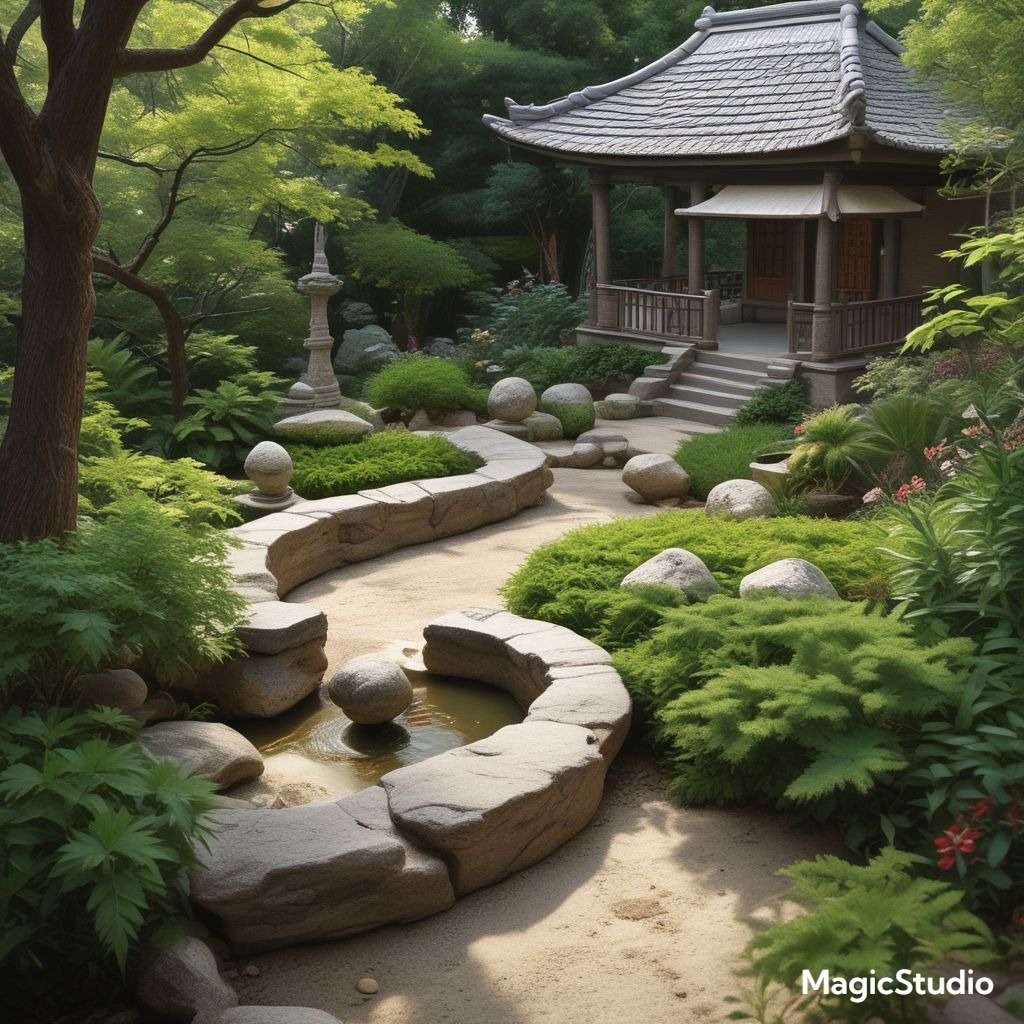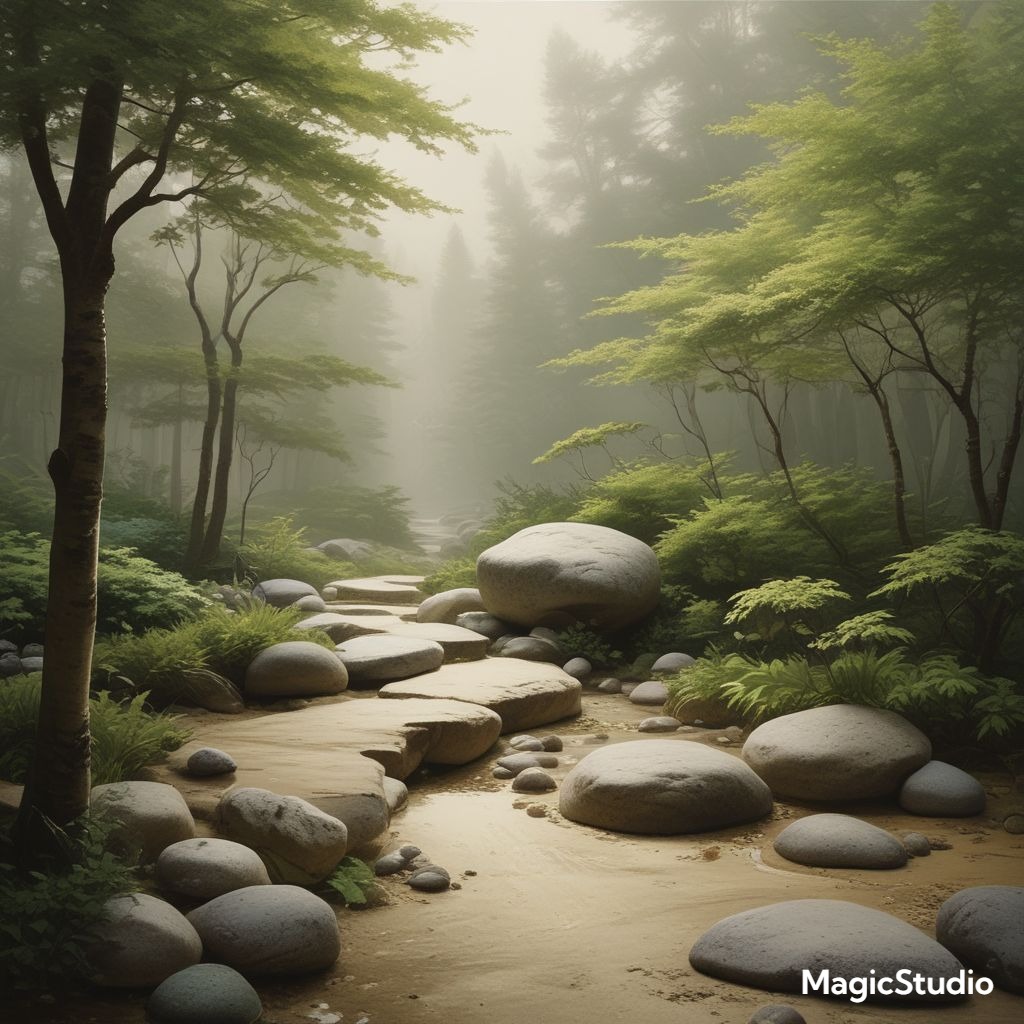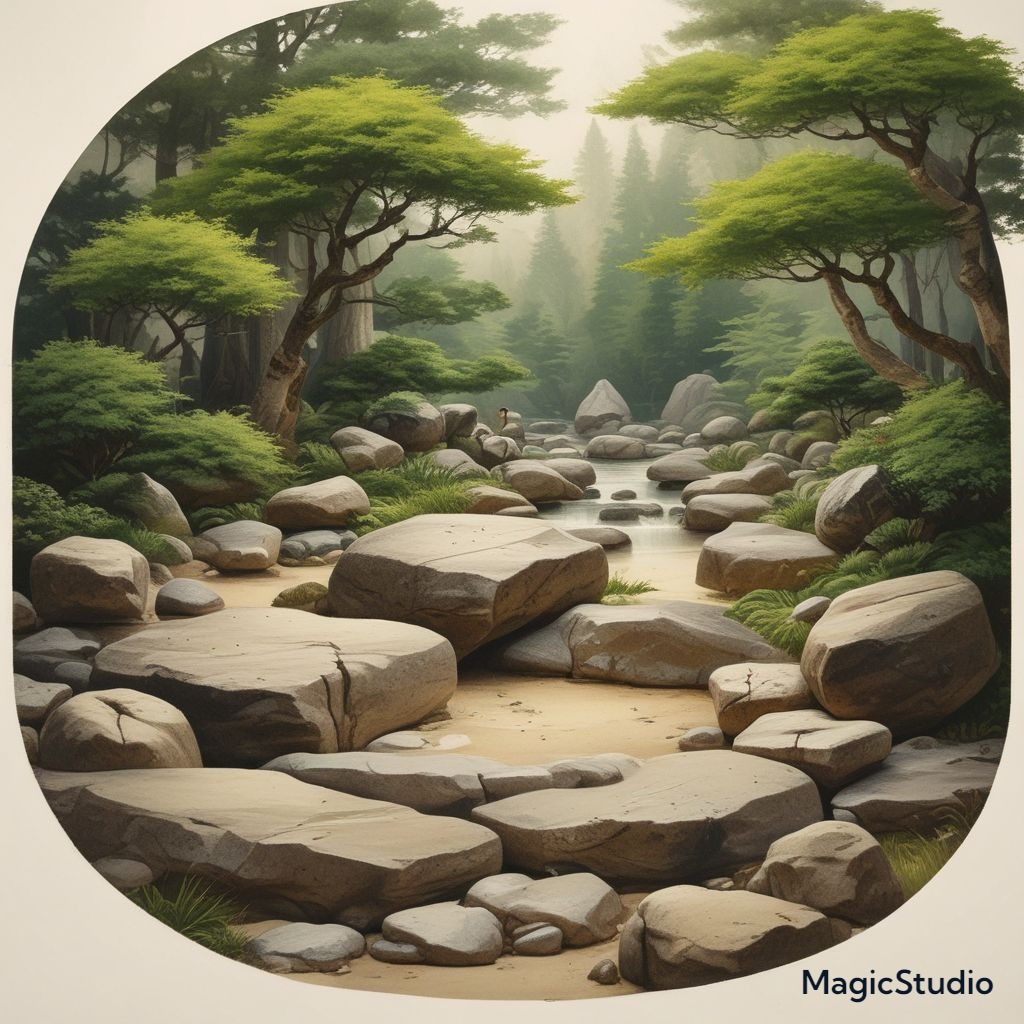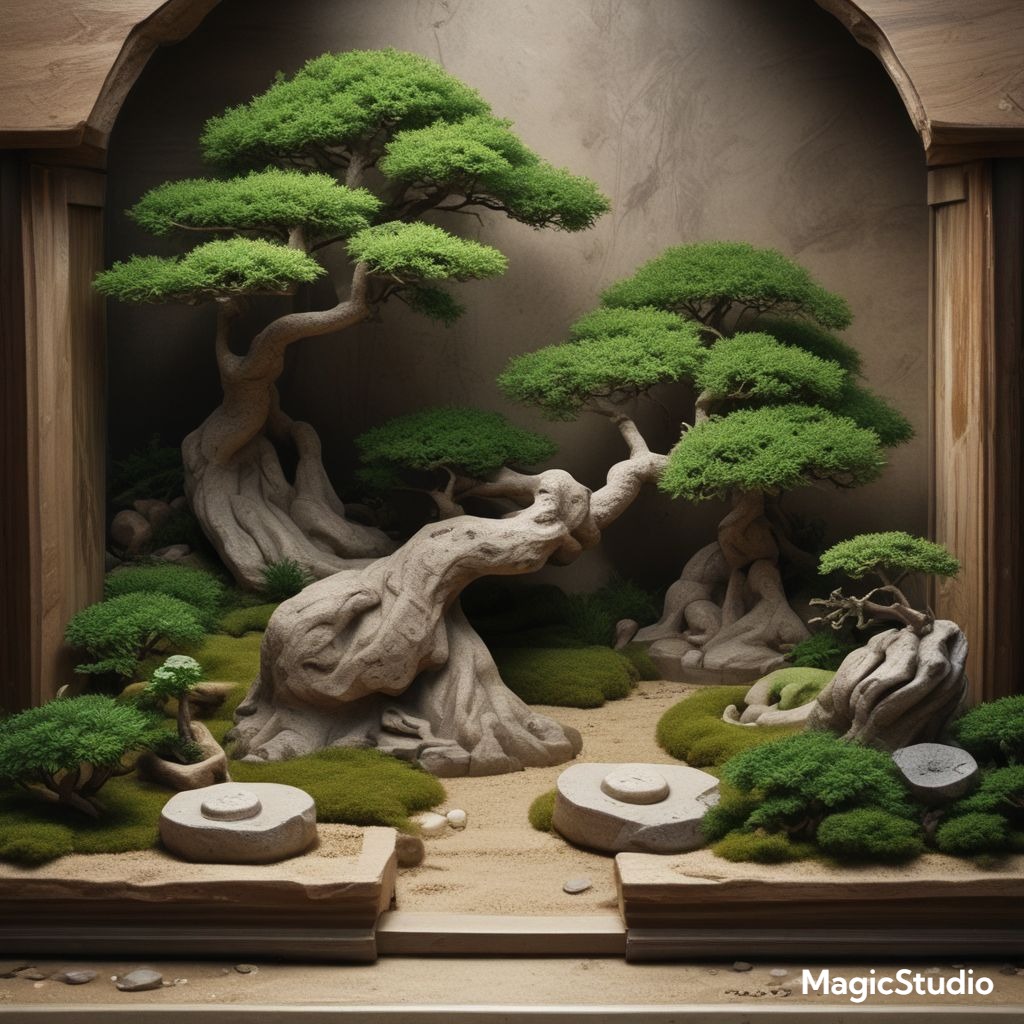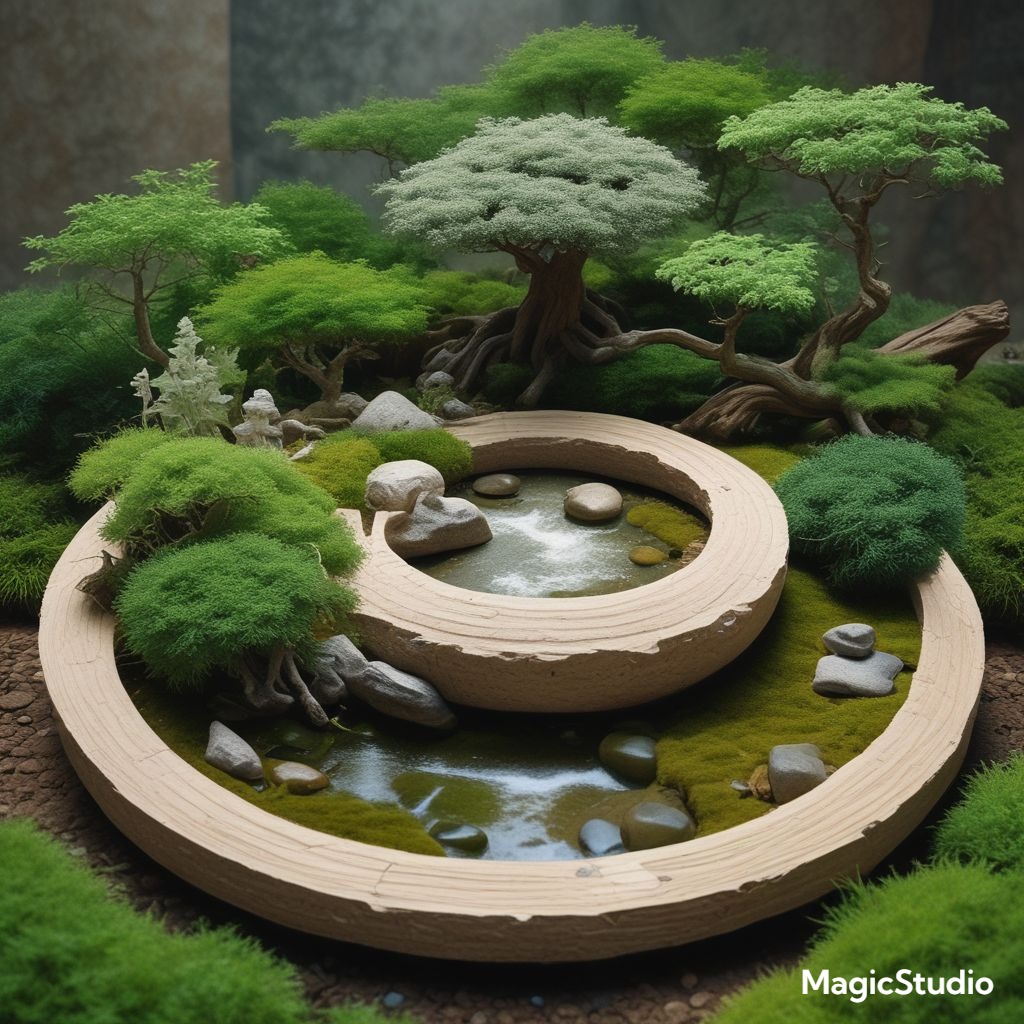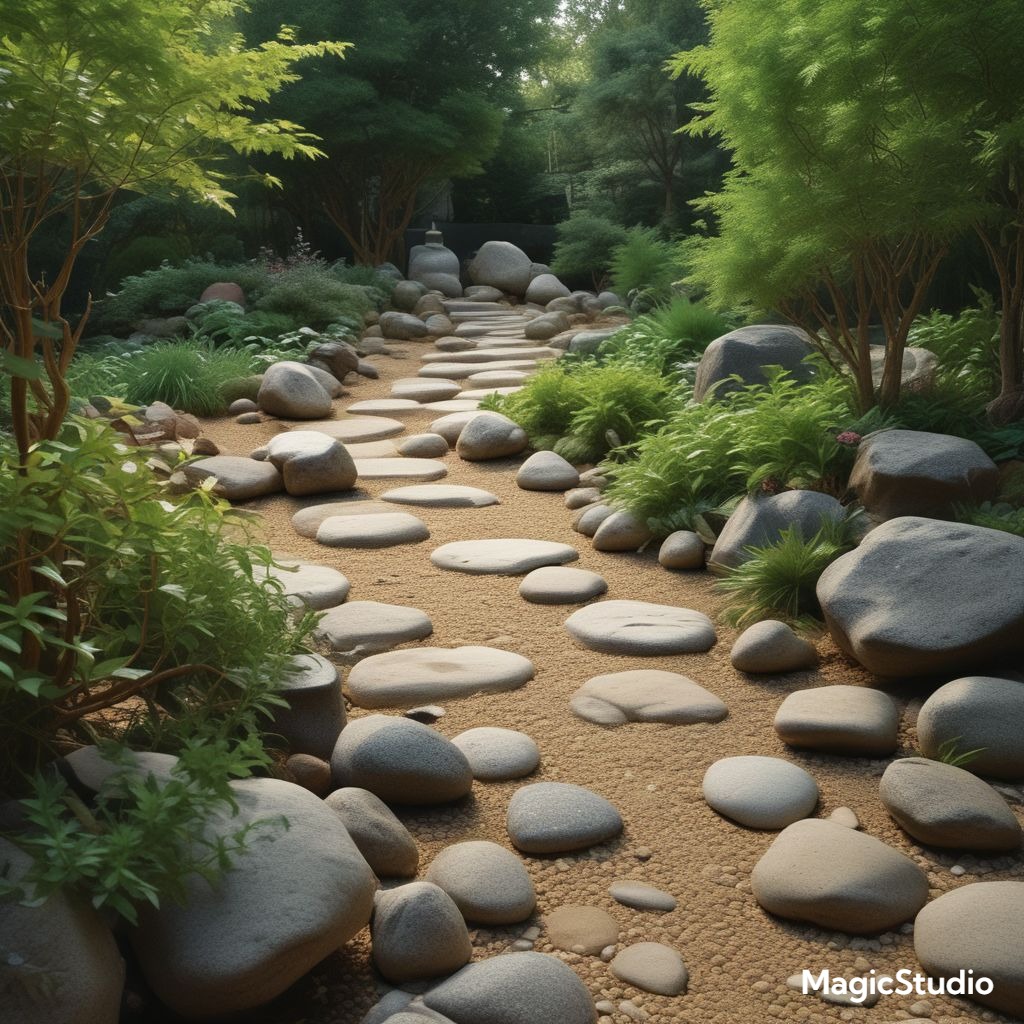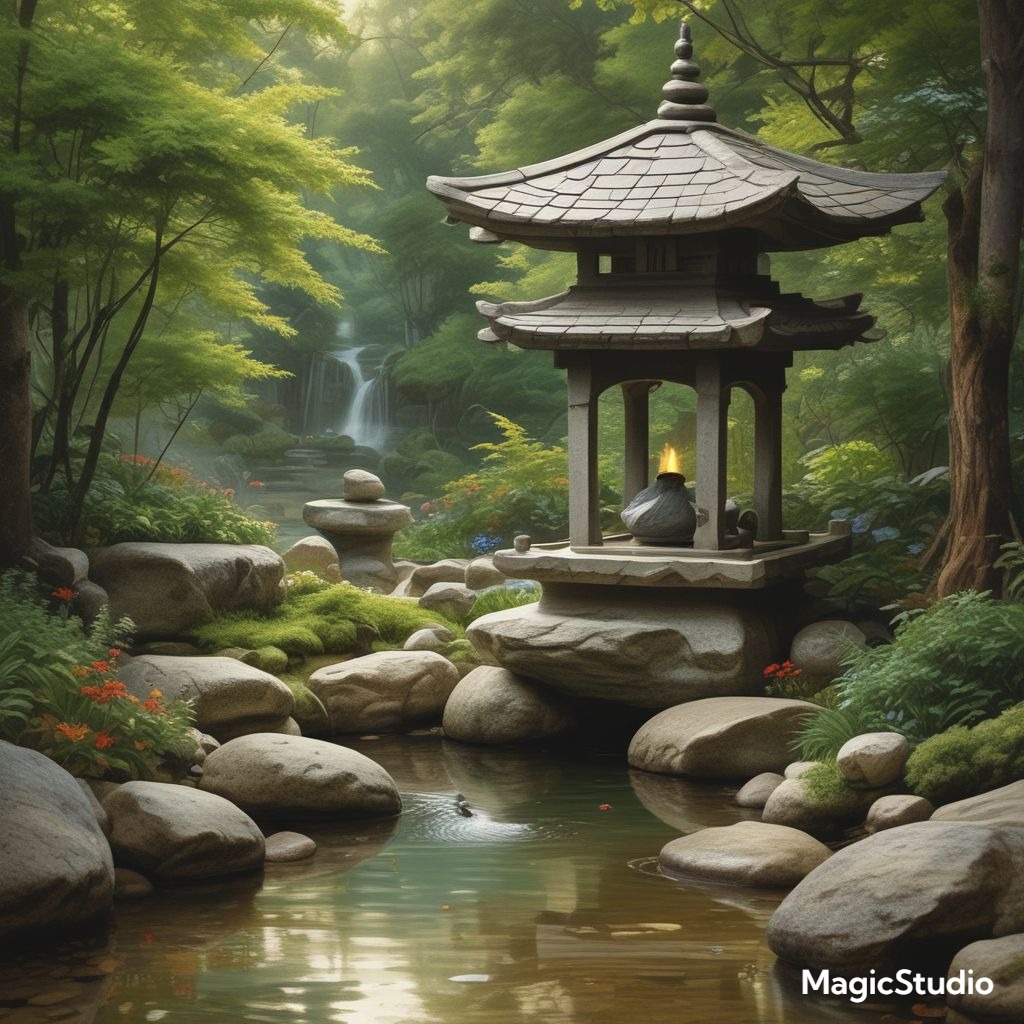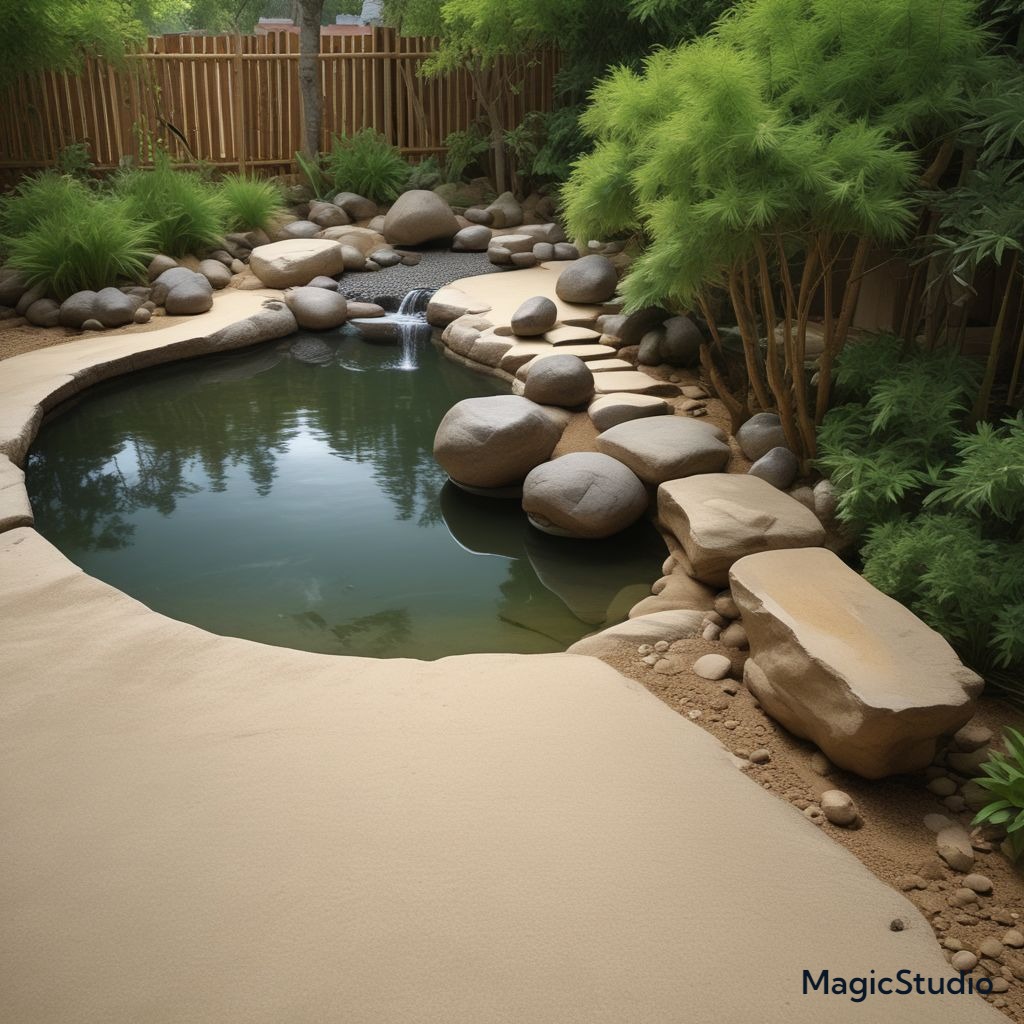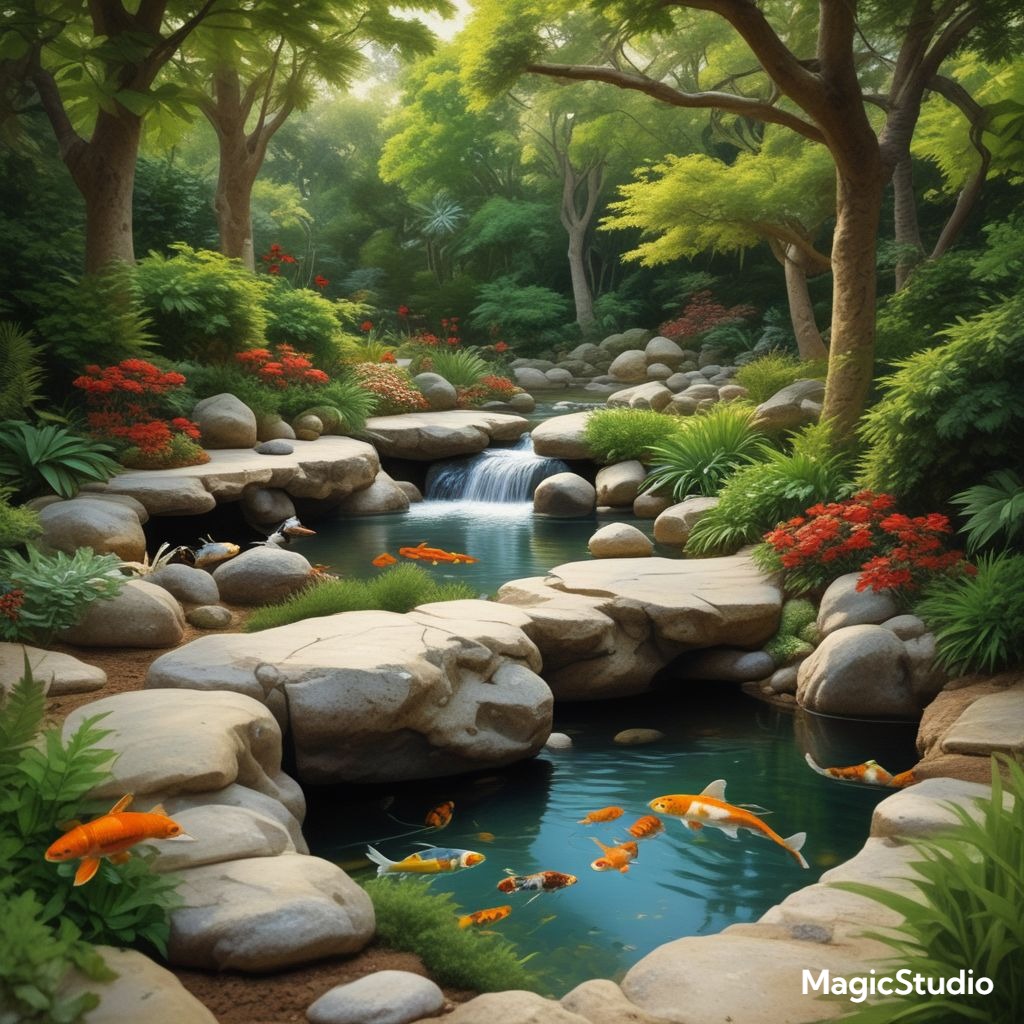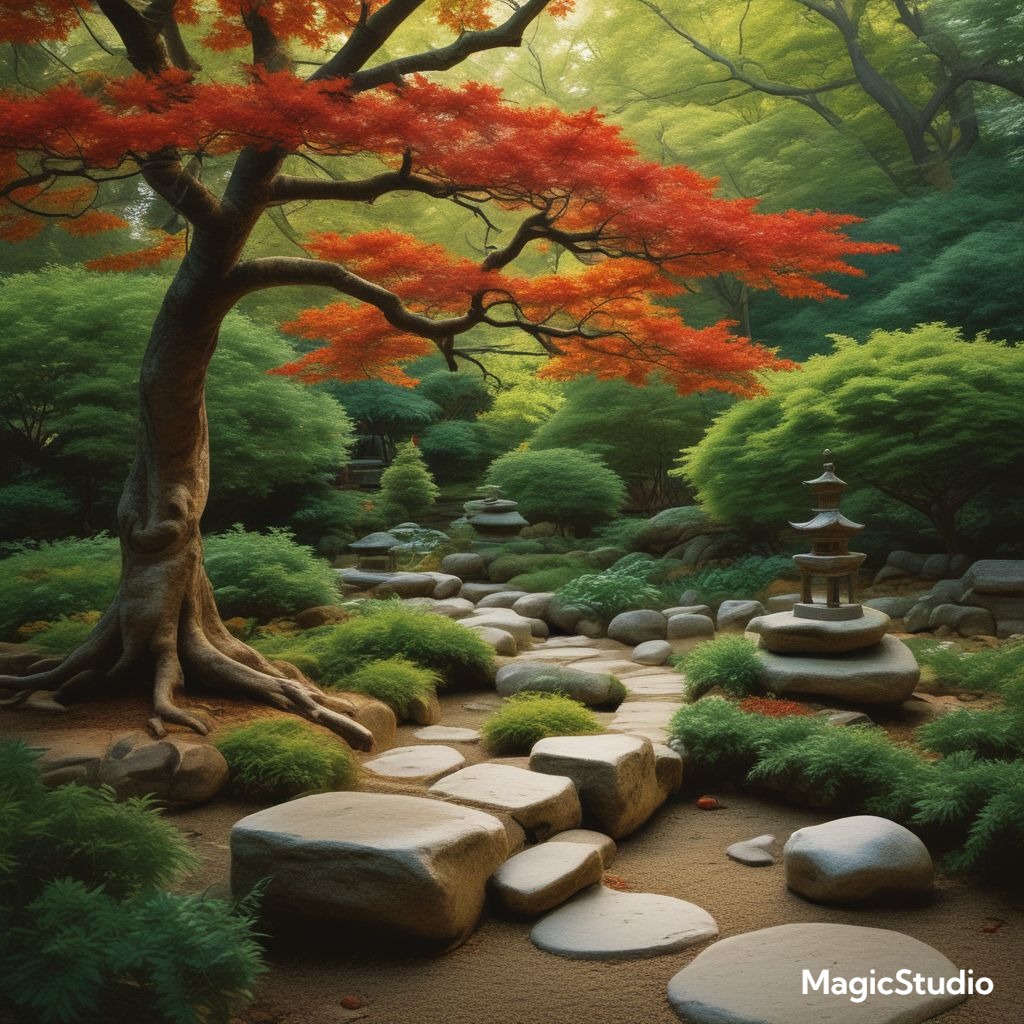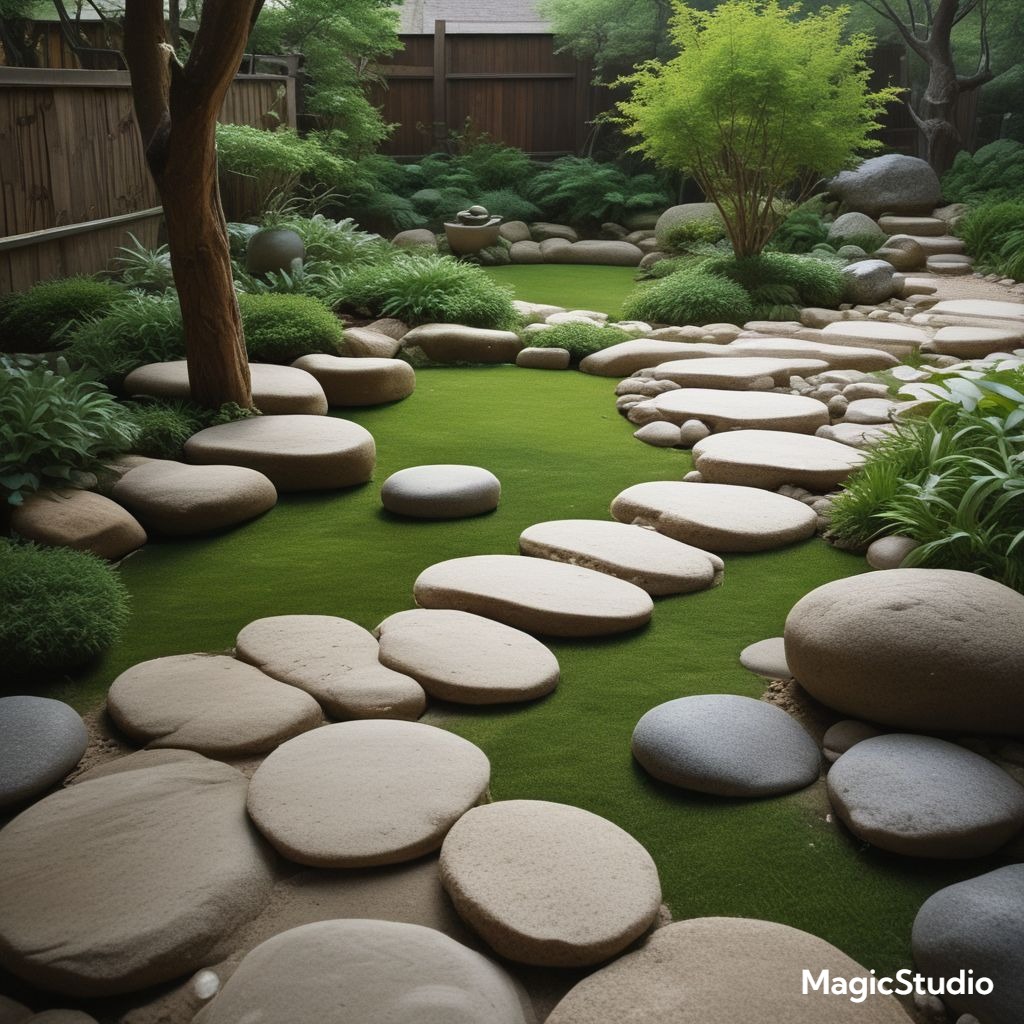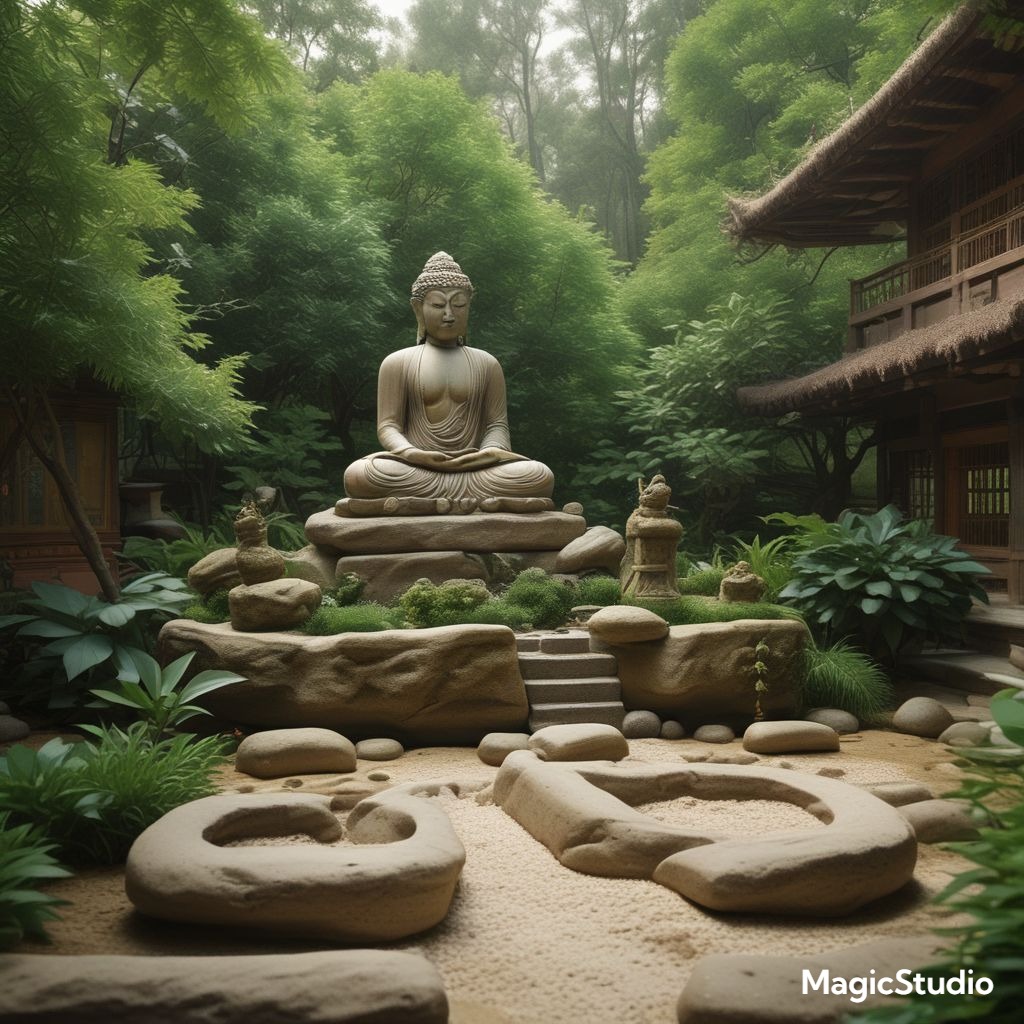Creating a zen garden at home is a fantastic way to bring tranquility and harmony into your living space. Whether you have a spacious backyard, a small patio, or even just a corner of your living room, a zen garden can serve as a peaceful retreat from the hustle and bustle of everyday life. These gardens draw inspiration from traditional Japanese gardens, emphasizing simplicity, balance, and mindfulness. They often incorporate natural elements like rocks, sand, water features, and carefully chosen plants, all designed to create a calming and meditative atmosphere.
Minimalist Zen Garden
Minimalism reigns supreme in the design world, and this extends to zen gardens as well. The minimalist zen garden focuses on simplicity and clean lines, often featuring a single focal point like a rock or a small water feature. The use of white gravel or sand creates a sense of space and tranquility, while the absence of clutter promotes a sense of peace. Colors are kept muted, with earthy tones like gray, beige, and white dominating the palette. In the US, this trend has become increasingly popular, with homeowners seeking to create a sense of calm amidst the chaos of modern life.
Japanese Rock Garden
The Japanese rock garden, or kare-sansui, is a classic example of zen garden design. This style typically features carefully arranged rocks placed on a bed of white gravel, often symbolizing mountains, islands, and the sea. The rocks are chosen for their unique shapes and textures, adding visual interest and a sense of natural beauty. Plants are minimal, with moss often being used to create a lush and verdant carpet. This style is gaining popularity in the EU, where homeowners are drawn to its simplicity and connection to nature.
Water Feature Zen Garden
Water is a key element in zen gardens, and the sound of flowing water is said to have calming effects. A small pond, a waterfall, or even a simple fountain can create a focal point and add a sense of tranquility to the garden. The use of natural stone or wood for the water feature creates a sense of harmony with the surrounding landscape. In both the US and EU, incorporating water features into zen gardens is a common practice, adding a soothing element to the design.
Zen Garden with Bonsai Trees
Bonsai trees are miniature trees that are carefully pruned and shaped to resemble larger trees, creating a sense of beauty and tranquility. These trees are often used as focal points in zen gardens, symbolizing longevity and resilience. The use of bonsai trees in zen gardens is popular both in the US and EU, adding a touch of elegance and sophistication to the design.
Zen Garden with Moss
Moss is a key element in many zen gardens, adding a lush and verdant carpet to the design. Moss can be used to cover rocks, pathways, and even the ground, creating a sense of peace and serenity. The soft green hue of moss provides a calming contrast to the white gravel or sand. This trend is particularly popular in the EU, where moss is often seen as a symbol of nature’s beauty and resilience.
Zen Garden with Gravel Path
A gravel path is a common feature in zen gardens, guiding visitors through the space and creating a sense of calm and contemplation. The soft sound of footsteps on the gravel adds to the peaceful atmosphere. The path is often designed to curve and meander, mimicking the natural flow of water. This style is popular in both the US and EU, creating a clear path to follow as well as a visual contrast to other elements of the garden.
Zen Garden with Stone Lantern
A stone lantern is a traditional Japanese element that is often used in zen gardens to represent enlightenment and spiritual awakening. The lantern is typically made of granite or sandstone and is placed strategically in the garden, creating a focal point and adding a sense of tranquility. The design of the lantern varies depending on its purpose and location, adding an interesting design element to the garden. This style is becoming more common in the US, with homeowners seeking to incorporate a sense of history and tradition into their designs.
Modern Zen Garden
While traditional zen gardens often feature natural elements, modern zen gardens incorporate contemporary design elements to create a unique and stylish space. Geometric shapes, minimalist furniture, and abstract sculptures can all be used to create a modern zen aesthetic. This style is gaining popularity in both the US and EU, blending traditional design elements with contemporary trends.
Zen Garden with Bamboo
Bamboo is a versatile plant that is often used in zen gardens to create a sense of privacy and tranquility. The tall, slender stalks of bamboo can be used to create screens, walls, or even walkways. The sound of the wind rustling through bamboo leaves adds a calming and meditative element to the garden. This style is particularly popular in the US, as bamboo is a sustainable and readily available material.
Zen Garden with Koi Pond
A koi pond is a popular feature in zen gardens, adding a sense of life and movement to the space. Koi are colorful, graceful fish that are known for their peaceful nature. The pond can be designed with natural stone or wood, creating a harmonious blend with the surrounding landscape. This style is common in both the US and EU, as koi ponds are a visually appealing and calming addition to any garden.
Zen Garden with Zen Stones
Zen stones are smooth, round stones that are often used in zen gardens to represent the cycle of life and the interconnectedness of all things. These stones are typically placed in groups of three or five, symbolizing balance and harmony. The stones are carefully chosen for their unique shapes and textures, adding visual interest and a sense of natural beauty. This style is popular in both the US and EU, as the stones are readily available and add a unique touch to any zen garden.
Zen Garden with Gravel Meditation Area
A gravel meditation area is a key feature in many zen gardens, providing a space for quiet reflection and contemplation. The gravel is typically raked to create patterns, symbolizing the transience of life and the importance of being present in the moment. The space is often designed with a small bench or cushion for seating. This style is popular in both the US and EU, as it creates a dedicated space for mindfulness practices.
Zen Garden with Pagoda
A pagoda is a traditional Japanese temple that is often used in zen gardens as a symbol of peace and tranquility. The pagoda is typically made of wood or stone and is designed with multiple tiers, representing the different levels of consciousness. The pagoda is placed strategically in the garden, creating a focal point and adding a sense of history and culture. This style is particularly popular in the US, as homeowners seek to incorporate a sense of spirituality into their garden designs.
Zen Garden with Japanese Maples
Japanese maples are known for their beautiful foliage, which changes color throughout the year, adding a touch of beauty and tranquility to the zen garden. These trees are typically placed in a prominent location, where their colorful foliage can be admired. The graceful shape of the tree adds a touch of elegance and sophistication to the design. This style is popular in both the US and EU, as Japanese maples are a common and visually appealing addition to any garden.
Zen Garden with Stone Stepping Stones
Stone stepping stones are a common feature in zen gardens, creating a pathway through the space and adding a sense of rhythm and balance. The stones are typically placed in a natural pattern, mimicking the flow of water. The smooth surface of the stones provides a contrast to the gravel or sand, adding visual interest and a sense of peace. This style is popular in both the US and EU, as stone stepping stones are a functional and aesthetically pleasing element in any garden.
Zen Garden with Buddha Statue
A Buddha statue is a common feature in zen gardens, representing peace, enlightenment, and compassion. The statue is typically placed in a prominent location, where it can be admired and contemplated. The statue is often made of stone or bronze, adding a touch of history and tradition to the design. This style is particularly popular in the EU, as homeowners seek to incorporate a sense of spirituality and mindfulness into their garden designs.
